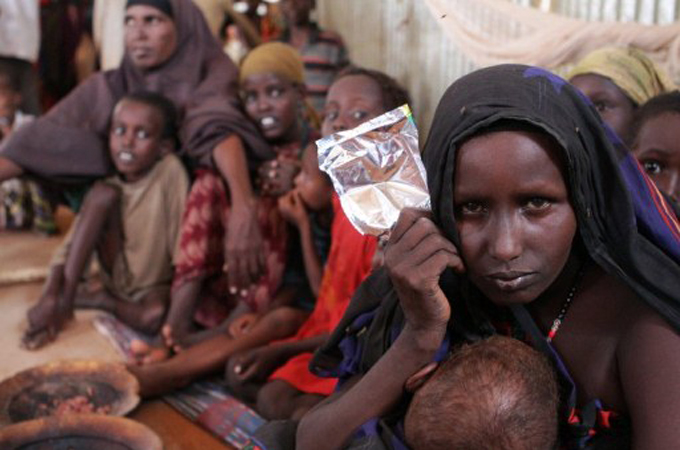UN says Somalia famine is over
Rain and food deliveries end famine conditions, but food stocks could run out in May and leave millions in need of aid.

 |
| UN says acute malnutrition rates remain about 20 per cent and access to treatment is severely restricted [AFP] |
An exceptional harvest, good rains and food deliveries by numerous aid agencies have helped end famine in Somalia but food stocks could run out again in May, the United Nations has said.
“Famine conditions are no longer present,” said a statement released on Friday from the office of Mark Bowden, the UN humanitarian coordinator for Somalia.
Keep reading
list of 4 itemsTurtles swimming to extinction in Malaysia as male hatchlings feel heat
Could shipping containers be the answer to Ghana’s housing crisis?
Thousands protest against over-tourism in Spain’s Canary Islands
The famine, which was declared in July 2011, killed tens of thousands in south and central Somalia. More than 2.3 million Somalis, almost one-third of the population, are still in need of aid.
“Millions of people still need food, clean water, shelter and other assistance to survive and the situation is expected to
deteriorate in May,” the statement cited Bowden as saying.
Three conditions
Grainne Maloney, who works for the UN’s Food and Agriculture Organisation in Nairobi, Kenya’s capital, told Al Jazeera that there has to be three outcomes for a famine to exist.
“The first is elevated mortality. At least two deaths per 10,000 people per day. Second, elevated malnutrition, meaning 30 per cent of children are acutely malnourished. And third, at least 20 per cent of population cant reach their food need,” Maloney said.
“So, although the magnitude and severity of the crisis have been reduced, we are still in an extreme crisis as 31 per cent of Somalia’s population continue to require some level of humanitarian assistance.”
The UN said the current harvest would provide just 10 to 20 per cent of this year’s food needs. It warned food stocks could run out in May, ahead of the main August harvest.
“We have less than 100 days to avoid another famine,” said Jose Graziano da Silva, director general of the UN’s Food and Agriculture Organisation.
“The crisis is not over. It can only be resolved with a combination of rains and continued, coordinated, long-term
actions that build up the resilience of the population and link relief with development.”
While aid deliveries to some 180,000 people in camps in the capital Mogadishu have improved the situation there, conflict in southern and central Somalia is still hampering aid deliveries to the worst-hit areas.
Conflict worsens crisis
Fighting between government forces and al-Shabab rebels, combined with attacks on aid workers and a history of aid being manipulated for political gain, means Somalia is one of the toughest countries for relief agencies to operate in.
Bowden called al-Shabab’s expulsion of the International Committee of the Red Cross from its territories a
“critical concern”.
This week, the fighters banned the aid agency, one of few international aid groups delivering food aid to areas under
rebel control, accusing it of distributing out-of-date food.
Al-Shabab denied a hunger crisis persisted, accused relief groups of misleading Somalis and said it would not lift a ban
imposed on more than a dozen aid agencies.
“There is no pretext for them,” Ali Mohamud Rage, Shabab spokesman told the Reuters news agency on Friday.
“Let those in Kenyan [refugee] camps and in Mogadishu come to us. There is no hunger in the areas under our control.”
The UN said the latest harvest in Somalia was double the average of the past 17 years, and this had lowered food prices,
though mortality rates in southern Somalia were still among the highest in the world.
In many parts of the south, acute malnutrition rates remain about 20 per cent and access to treatment is severely restricted.